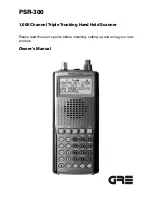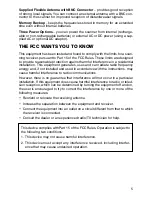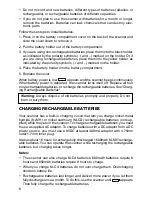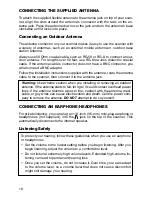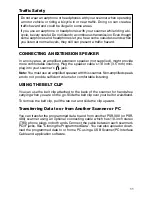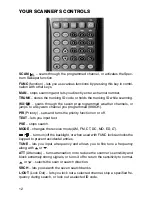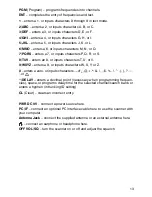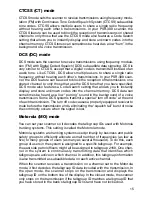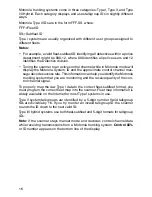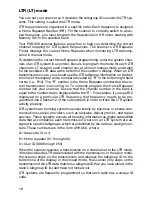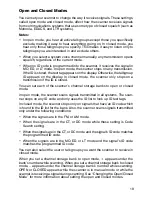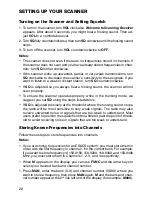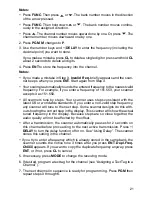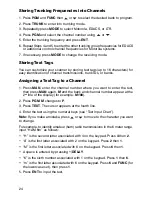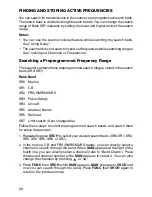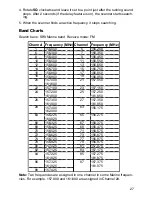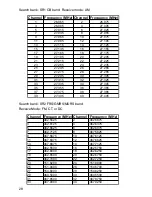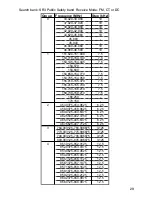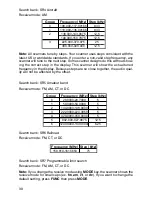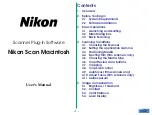
15
CTCSS (CT) mode
CTCSS mode sets the scanner to receive transmissions using frequency modu-
lation (FM) with Continuous Tone Coded Squelch System (CTCSS) subaudible
tone codes. CTCSS allows multiple users to share a single radio frequency
without hearing each other’s transmissions. In your PSR-300 scanner, the
CTCSS feature can be used to block the reception of transmissions on shared
channel to only those that use the CTCSS mode also features a Code Search
setting that allows you to instantly display and store unknown codes into the
channel memory. CTCSS tones can sometimes be heard as a low “hum” in the
background of a voice transmission.
DCS (DC) mode
DCS mode sets the scanner to receive transmissions using frequency modula-
tion (FM) with Digital Coded Squelch (DCS) subaudible data signaling. DCS is
very similar to CTCSS, except that a digital code is transmitted instead of an
audio tone. Like CTCSS, DCS allows multiple users to share a single radio
frequency without hearing each other’s transmissions. In your PSR-300 scan-
ner, the DCS feature can be used to block the reception of transmissions on a
shared channel to only those that use the DCS tone that you have specified.
DCS mode also features a Code Search setting that allows you to instantly
display and store unknown codes into the channel memory. DCS data can
sometimes be heard as a low “purring” sound in the background of a voice
transmission. Some DCS systems transmit a special “turn off code” at the end
of each transmission. The turn off code causes a properly equipped receiver to
mute before the transmission ends, eliminating the “squelch tail” burst of noise
the commonly occurs when the signal is lost.
Motorola (MO) mode
You can set your scanner so it decodes the talk group IDs used with Motorola
trunking systems. This setting is called the Motorola mode.
Motorola systems are trunking systems used primarily by business and public
safety groups to efficiently allocate a small number of frequencies (as few as
five) to many groups of users (as many as several thousand). To do this, each
group of users in the system is assigned to a specific talkgroup. For example,
the east side patrol officers might all be assigned to talkgroup 2160. One chan-
nel in the system is continuously transmitting data that identifies which
talkgroups are active on which channel. In addition, this talkgroup information
is also transmitted as subaudible data on each active channel.
When the scanner receives a transmission on a channel set to the Motorola
mode, it first decodes the talkgroup ID data included with the transmission. In
the open mode, the scanner stops on the transmission and displays the
talkgroup ID on the bottom line of the display. In the closed mode, the scanner
only stops on the transmission if the talkgroup ID matches a talkgroup ID that
you have stored in the bank’s talkgroup ID list and have not locked out.

